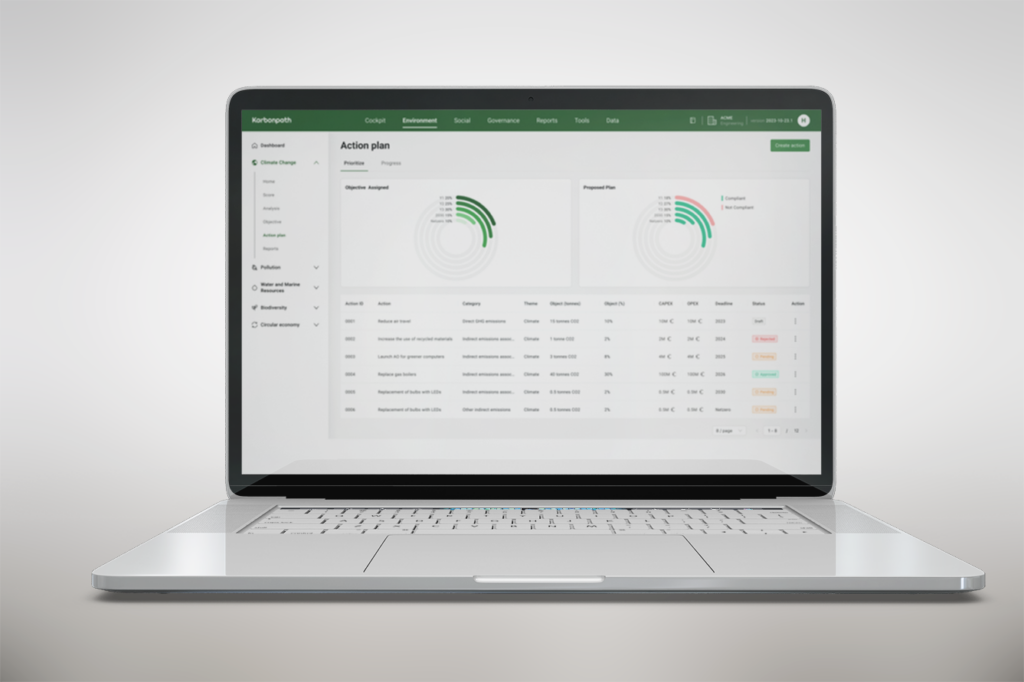
CSRD compliance and sustainability performance
Karbonpath, your sustainability compliance and performance platform.

- Karbonpath secures the compliance of your extra-financial reporting, in accordance with the CSRD requirements. With Karbonpath, control your ESG compliance process, from strategy to sustainability reporting.
- Karbonpath makes it possible to move from strategy to action, by committing your organization to ESG transformation. With Karbonpath, manage your extra-financial performance by tracking environmental and social indicators and implementing action plans.
- Karbonpath facilitates data collection and processing by integrating with your information system. With Karbonpath, secure the traceability, auditability and reliability of your ESG data.

Ensure the CSRD compliance of your ESG reporting
Define your ESG strategy and policies. Perform your double materiality analysis by assessing your impacts, risks and opportunities. Delineate your reporting scope; select your data points from the 1135 data points of ESRS – European sustainability reporting standards: climate change , pollution, water and marine resources, biodiversity, circular economy, company workforce, value chain employees, communities, consumers, governance. Publish your sustainability report in the format and content required by CSRD.

Continuously monitor and improve your performance
Measure your company’s environmental footprint using our Carbon Footprint and Life Cycle Assessment modules. Align all levels of management with your ESG strategy by steering objectives and action plans on an ongoing basis. Collect environmental and social data directly from your information systems, and visualize the results as part of your management cycle. Engage your entire value chain and your internal and external stakeholders.

Transform the value of your organization
Make extra-financial performance a differentiating factor, guaranteed by the quality and traceability of environmental, social and governance data. Communicate your sustainability information to your stakeholders – including customers, employees, shareholders and legislators. Ensure the sustainability of your business model and guarantee the attractiveness of your organization. The Karbonpath platform makes your ESG processes more reliable, from strategy to regulatory reporting.
They Trust Us







Our Partners











ESG data and reports that are auditable, traceable and compliant with standards and regulations








